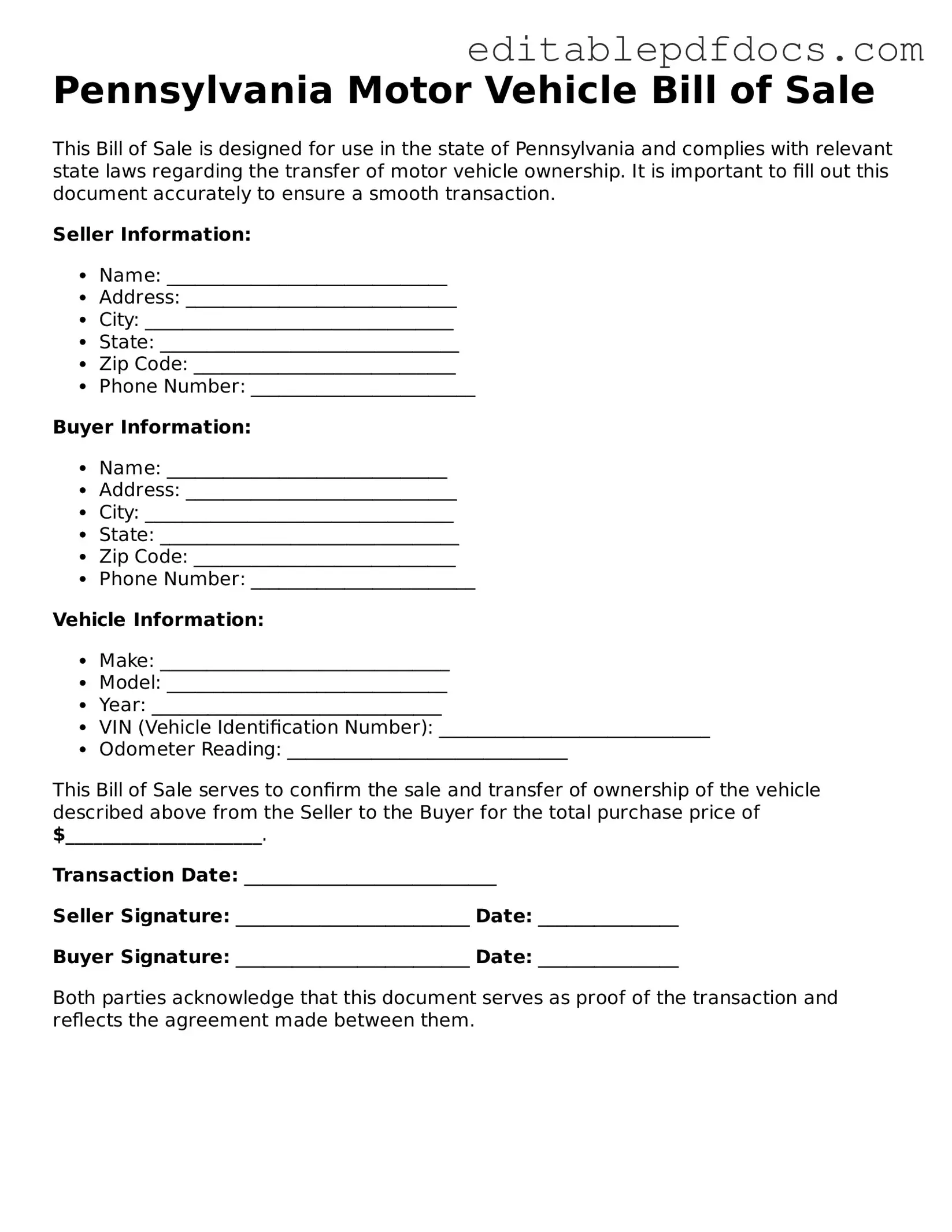Filling out the Pennsylvania Motor Vehicle Bill of Sale form can seem straightforward, but many people make common mistakes that can lead to complications down the road. One frequent error is failing to include all necessary information about the vehicle. This includes the Vehicle Identification Number (VIN), make, model, and year. Omitting any of these details can create confusion and may even invalidate the sale.
Another mistake is not providing accurate information about the seller and buyer. Both parties must include their full names, addresses, and signatures. Incomplete or incorrect names can lead to disputes later on. Always double-check that the names are spelled correctly and that all addresses are current.
Some individuals neglect to date the form. The date of the sale is crucial for establishing the timeline of ownership. Without a date, it may be difficult to prove when the transaction occurred, which can complicate registration and title transfer processes.
Additionally, many people overlook the importance of having witnesses or notarization. While Pennsylvania does not require a bill of sale to be notarized, having a witness can add an extra layer of protection for both parties. It’s a good practice to have someone present during the signing to verify that the transaction took place.
Another common pitfall is not understanding the implications of the sale price. Sellers should clearly state the amount paid for the vehicle. This amount is often used for tax purposes, and inaccuracies can lead to issues with the Pennsylvania Department of Transportation.
People often forget to keep a copy of the completed bill of sale for their records. This document serves as proof of the transaction and can be invaluable if any disputes arise later. Always make sure to have a signed copy for both the buyer and seller.
Lastly, failing to follow up with the title transfer can create significant headaches. After the bill of sale is completed, it’s essential for the buyer to apply for a new title in their name. Neglecting this step can lead to complications with vehicle registration and ownership rights in the future.
